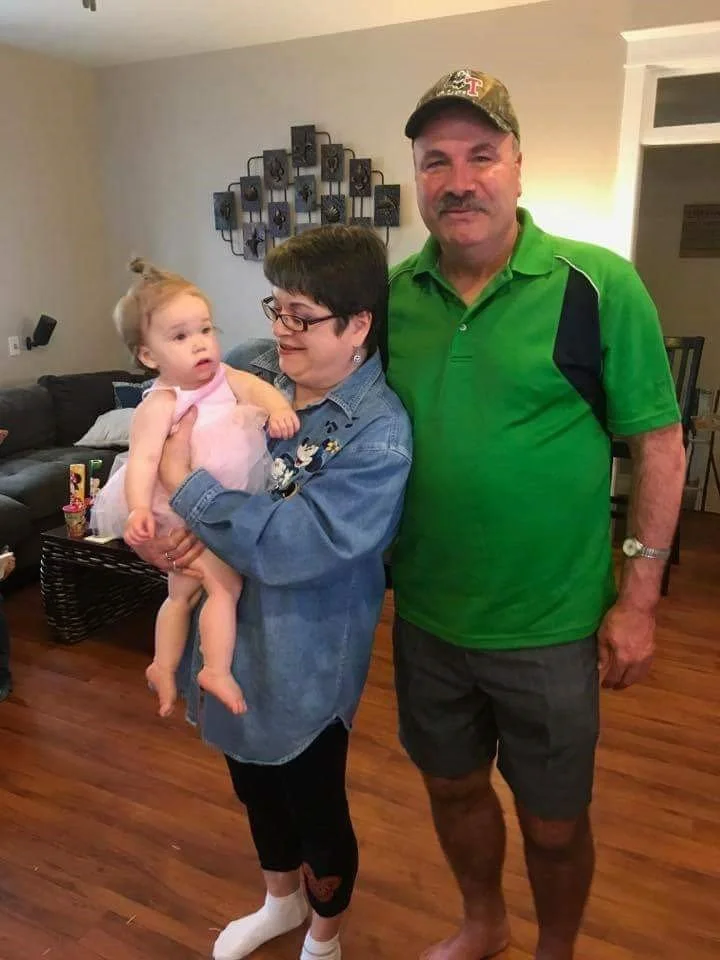Carl S.
There are many of you who have asked about the whole story of my husband Carl's illness. Sepsis has done so much damage to my husband.
October 2016, Carl wasn't feeling well but we thought it was just the flu. After 4 days at home he went to the hospital, he was found to have cellulitis in his legs. They were so swollen he couldn't walk. He was diagnosed with sepsis, I.V. antibiotics were started and he was in hospital for 17 days. While in hospital he had a number of tests including his heart. Tests indicated there was something suspicious with his aorta and were led to believe the antibiotics would probably clear it up. He was discharged with a walker.
For a few days he seemed to be getting better, but on his 4th day home he began to slid backwards. He was having a hard time catching his breath. The last two nights home he couldn't lie down, he felt like he was drowning. He returned to his doctor, after only a couple of questions the doctor insisted Carl return to the hospital. The Doctor ran a few tests and Carl was readmitted.
Many tests were performed and nothing was found. A 6 week round of IV antibiotics were started and then they put in a pic line and an IV drug like a water pill was started. He required oxygen the 1st night but not the second or third. On the 4th night he started going down again. He again couldn't catch his breath requiring oxygen. Thursday he was having a real hard time. He required oxygen all day and he could no longer walk the halls. He was told he would have to go to the city to have his heart looked at.
Friday evening at about 830pm EMTs arrived to transport him by ambulance to the city hospital. Carl sat on the bed while they prepared him for transport. He couldn't seem to catch breath. He was provided an oxygen tank and he was on his way. Once on main the level of the hospital the real trouble began. Carl couldn't breath and the EMTs took him into the ER. The ER doctors saved his life. He was in a bad, bad way. They tried to get urine through a catheter with no luck, his kidneys had stopped working. They needed to get him to another hospital fast. His lungs were full of fluid. He was incubated and transported... Scared us to death!
Fast forward to Carl’s arrival to ICU, where the real work begins. Carl was in congestive heart failure. Kidneys weren’t functioning at all and he required dialysis. After a lot of tests, they find Carl’s aorta was extremely damaged. Now he is the sickest on the list in ICU, but may be to sick for the surgery. More tests show there are also 2 blocked arteries. They were finally able to stabilize him and 30 hours after his arrival to city hospital,1 month post Sepsis discharge, Carl was wheeled in for what turned out to be 7 hour heart surgery. Carl’s aorta had been so damaged in the first event, there was a missing a piece from a flap that could never have repaired itself. We were so thankful he pulled through the surgery.
In January 2017, not 2 months later, Carl was again ‘going septic’ from an infection this time in his knee. The infection required surgery and a further hospital stay. Carl suffered 3 life threatening events in 4 months, 55 days in hospital.
We strongly believe there needs to be a better understanding of Sepsis and the damage it causes in general by all levels of the healthcare community. We firmly believe that if there had been some type of Sepsis focused requirements/checklist before discharge much of this could have been avoided. I believe it would have made a difference to the damage my husband sustained post sepsis discharge. This damage is permanent! The effects of sepsis have been felt by every member of our family. He and our family deserve to be better informed on what exactly had happened to him and the risks he faced in recovery, then we ever were.



